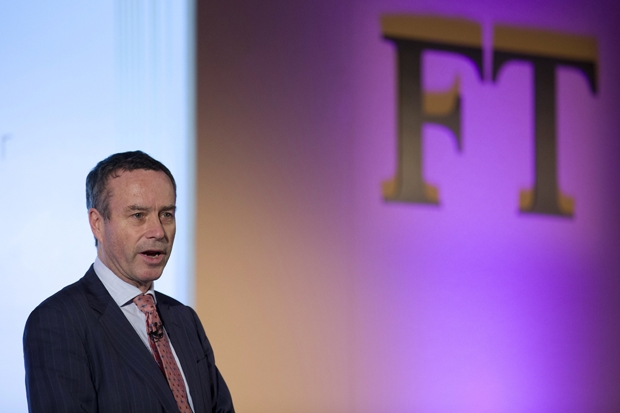Those who want to revive grammar schools are accused of ‘bring backery’ — the unthinking idea that the past was better. But many of their accusers suffer from the rigid mindset of which they complain. They say that grammar schools ‘condemned most children to failure at the age of 11’, and that, even at their peak, grammars catered for less than 20 per cent of the school population. Why assume that the return of grammars must re-create either of these things? Grammar schools grew up, historically, in different ways and at different times. Then, in the mid‑20th-century mania for uniformity, they were standardised and, in the later 20th-century mania for comprehensives, almost completely abolished. All that should happen now is that grammar schools should recover the freedom to exist, with the support of public money. There could be none in some places, lots in others; with different, or multiple, entry years; single-sex, or coeducational; including fee-paying pupils, or not; and so on. The really big policy change would be that the state would be prepared once again to help fund selective schools. They wouldn’t even have to be called grammar schools, but it would be a good reminder of the foundations of education if they were.
Congratulations to Lionel Barber, editor of the Financial Times, who accidentally revealed that he is to be awarded the French Légion d’Honneur for his ‘positive role in the European debate’. One’s only slight sadness is that Mr Barber has had to look abroad for such recognition. In his resignation list, David Cameron has showered honours on similarly ‘positive’ Remainers in his entourage, but ungratefully omitted the media. So more Légions d’Honneur, please, for Katharine Viner, the editor of the Guardian, Zanny Minton Beddoes, the editor of the Economist, and the entire staff of the BBC.
In Canterbury Cathedral undercroft last week, I spoke at the funeral of a friend of 40 years. Clive Lee was a clergyman, and the chaplain at Vinehall, a prep school near us in Sussex. He taught me a lot, without saying he was, about the right attitude to objects. Although the worship of possessions is obviously wrong, I have always had difficulty with ascetic traditions which scorn all material things as delusive examples of worldly vanity. Clive was a self-trained expert on many beautiful things — pictures, clocks, furniture — and he also knew how to find them at a good price. But his interest in them was never covetous. Usually, he had no sooner bought something than he began to wonder how best to give it away (even though he had very little money). He was like a dealer in art, finding and passing on all the time, but the gain he won with each ‘sale’ was spiritual not financial. He equally loved valueless objects if they reminded him of friends, or places, or his dogs. Shortly after our silver wedding, Clive came to lunch with us, and produced a few scraps of paper. They were my notes for the speech I made on my wedding day. I had left them on the table. He had scooped them up and kept them for a quarter of a century. It was moving to discover that a friend had thought of such a thing. Over the years, I came to realise what a religious attitude Clive had to objects. He used them as keys to the world beyond. For him, they resembled the Prayer Book’s definition of a sacrament — ‘an outward and visible sign of an inward and spiritual grace’.
Clive also had an admirable attitude to reading. He loved literature, but was almost like Nancy Mitford’s Uncle Matthew, who found White Fang ‘so damned good’ that he could not see the need to read any other novel. He repeatedly read the same things — the Bible and Missal, of course, and the works of Evelyn Waugh, John Betjeman and Mitford herself. There was always either a Waugh or Mitford novel in the pocket of his car door so that he could snatch a paragraph in traffic jams. When he was in his care home and losing his memory, I would read him random passages from The Pursuit of Love, and he would often laugh and shout out the next bit. I still have the urge to read new things, but I increasingly wonder if it wouldn’t be a better use of time to cut out everything but the best, whatever one thinks that is, and read it again and again.
I read Christopher Howse’s review in this magazine (30 July) of The Bible for Grown-Ups by Simon Loveday. Then I read Matthew Parris’s furious column about it the following week. I am perplexed by Matthew’s rage, unless it be caused simply by the admirable desire to stick up for a friend whose work has been slated. Not having read Loveday’s book, I am unbiased, but I feel a comparable need to defend my friend Christopher Howse. What he was surely saying — in fact with some restraint — was that Mr Loveday did not know what he was talking about, not that it was wrong for anyone to talk about it. It is an odd thing that people who would not feel free to write a book about, say, Newton’s Principia or Justinian’s Code, because they feel too ignorant, are often ready to have a crack at books about the Bible. Part of this urge comes from the belief, which Howse was questioning, that the thing to do with the Bible is to ‘set aside theology and history’, and look at the rest. Matthew Parris counters that Mr Loveday finds the Bible ‘moving, instructive and beautiful even when its central figure is pixellated out’. No doubt it can be, but surely it is much more moving, instructive and beautiful without that pixellation. I apologise for the vainglorious implications of the following comparison, but I have spent nearly 20 years writing the biography of Margaret Thatcher. Readers will perhaps find some things to interest them if they pixellate her out — what young women wore in the 1940s, for example — but why bother? This is a million times truer of the biography of God.







Comments